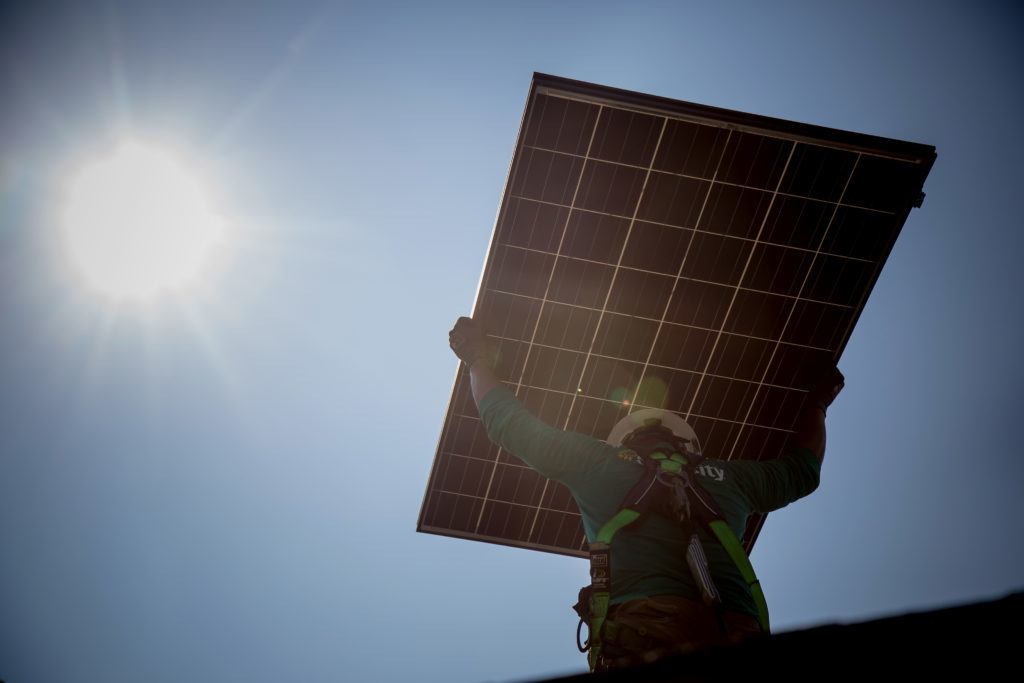
Elon Musk once called Tesla’s $2.6 billion acquisition of debt-burdened SolarCity “blindingly obvious.” Three years later, it’s anything but.
Tesla, which gets most of its revenue from automobiles, installed just 29 megawatts in the second quarter — its fewest megawatts yet in a single period. That’s down from its previous low of 47 megawatts in the first quarter.
At its height, SolarCity installed more than 200 megawatts over three months.
“They’re just barely in the solar game,” said Joe Osha, an analyst at JMP Securities.
“This business requires capital and focus, and at this point it’s not even clear who’s running it. They’d just be better off shutting the solar business down. It’s a distraction.”
A Tesla spokesman didn’t immediately comment, but the company said in its second-quarter investor letter Wednesday that it’s committed to solar: “We are in the process of improving many aspects of this business to increase deployments.”
Strategy Shifts
The company scrapped door-to-door sales, stopped marketing panel systems through Home Depot Inc. and now offers standardized panel systems online, rather than the bespoke arrays that’s driven the industry’s growth — strategic shifts that have contributed to an erosion in Tesla’s market share.
The solar roof product, which Musk unveiled with great fanfare in October 2016, has gone through several design changes. Though he earlier declared that 2019 would be “the year of the solar roof,” it wasn’t mentioned at all during the second-quarter results report.
The company reported energy and storage revenue of $368.2 million in the second quarter, down from $374.4 million a year earlier. Tesla’s overall revenue exceeded $6 billion in the three months ended June 30.
“There are fewer and fewer people selling SolarCity systems,” said Hugh Bromley, an analyst at BloombergNEF. “The future of the SolarCity business is uncertain — especially Tesla’s commitment to keeping it alive.”
In its first quarter investor letter, Tesla said “the key to accelerating mass adoption is to standardize the product offering, simplify the customer buying experience, and focus on the markets with the strongest economics.”
Inherited Debt
SolarCity — through convertible bonds, solar bonds, loans and asset-backed securities — makes up roughly a third of Tesla’s overall debt outstanding. It’s included in the company’s overall credit profile when assessed by rating agencies, which has partly weakened its leverage metrics, S&P Global Ratings analyst Nishit Madlani said in a May report.
“Adding financial risk into a growth business that’s highly capital intensive is a red flag,” said Bloomberg Intelligence analyst Joel Levington. “Unfortunately that has played out.”
Still, Tesla has been paying down that debt and its auto business has become more profitable since acquiring SolarCity, which has lessened the pressure on the balance sheet, said CreditSights Inc. analyst Hitin Anand.
“It’s an issue, but it’s more manageable now than it’s ever been in the past,” he said.